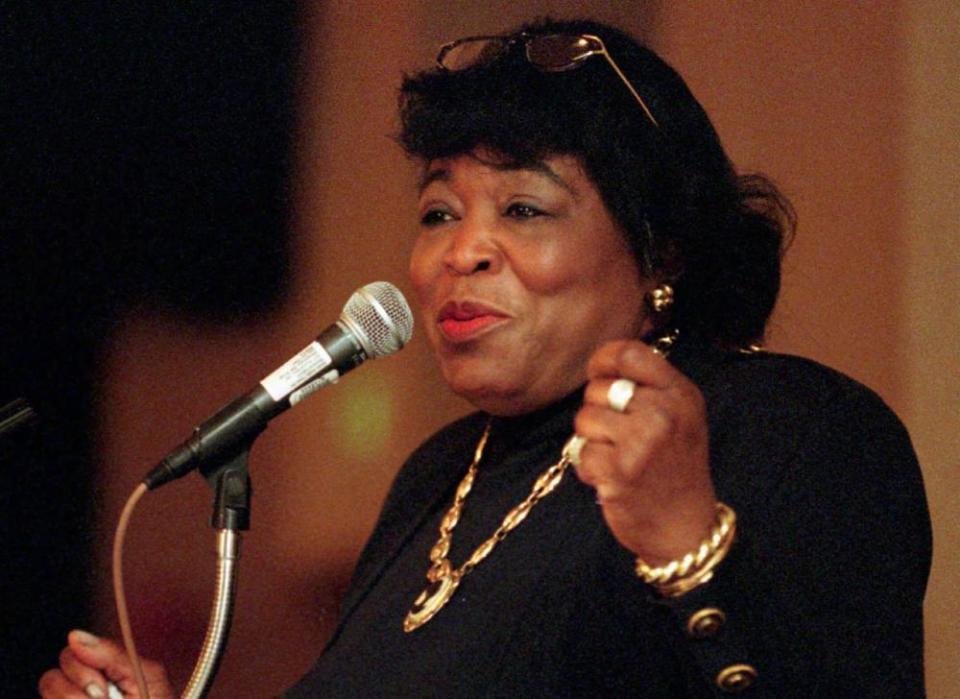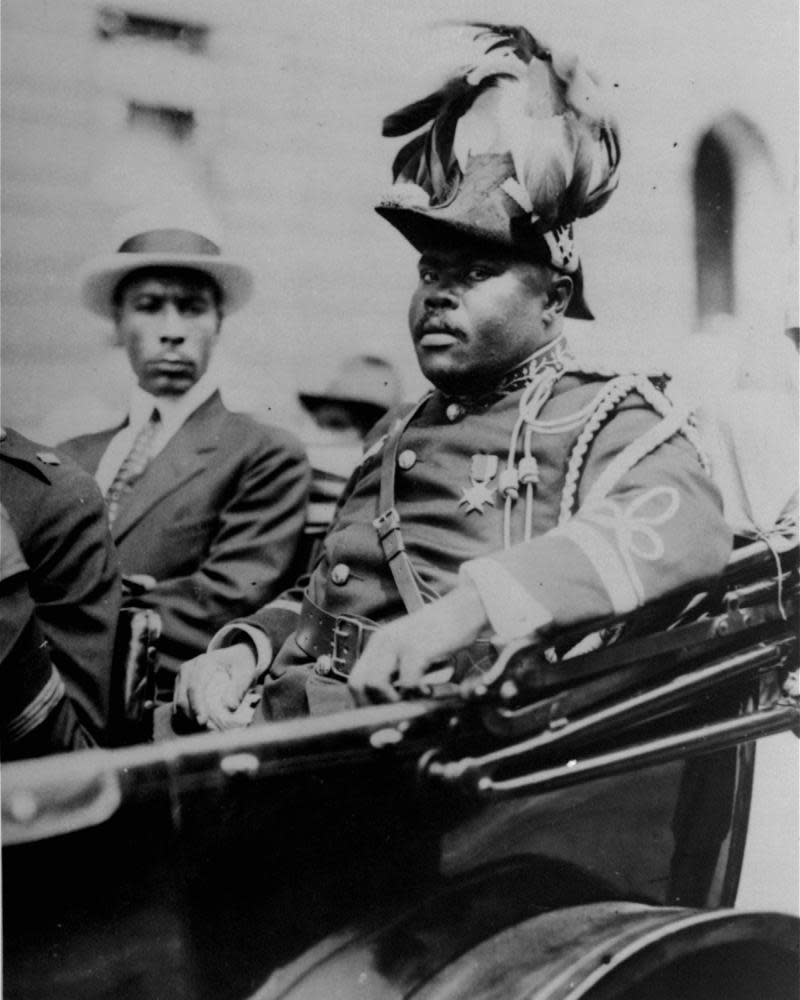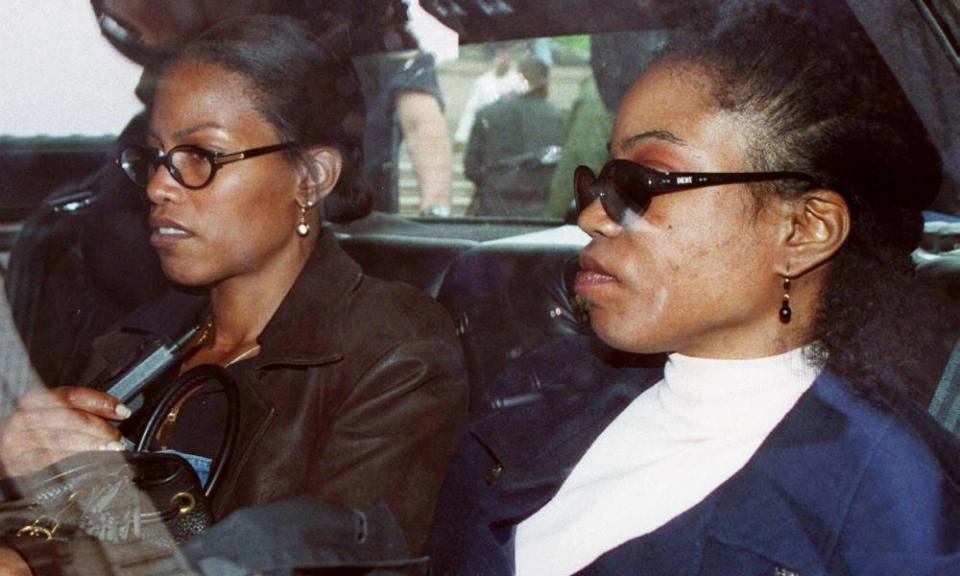The women who shaped Malcolm X
Since he was assassinated inside the Audubon Ballroom 56 years ago on Sunday, Malcolm X, the “black shining prince” has been immortalised, demonised and revered around the world.
Like his contemporary Martin Luther King Jr, Malcolm X was a vehement critic of institutional racism, imperialism and capitalism. But his militant stance and radical ideas often meant he was compared unfavorably to King, shelved as a violent revolutionary.
It seems he ruffled many feathers: questions over who was responsible for his assassination in 1965 are still being examined – through a Netflix documentary last year and with further questions resurfacing this week, after a letter written by an NYPD officer on his death-bed claimed the NYPD and the FBI were involved in his assassination.
But many know little about the women whose influence and support were vital to the making of Malcolm X, one of history’s most significant civil rights leaders. We spoke to his daughter, Ilyasah Shabazz, academics Dr Sylvia Chan-Malik, professor Keisha N Blain, and historian Russell Rickford, who told us the story of how Malcolm X’s vision, journey and radical political trajectory were shaped by the women in his life.
Dr Betty Shabazz, Malcolm X’s wife

Like most accounts of the civil rights titan, there’s a story Alex Haley’s Autobiography of Malcolm X never told. The life of Dr Betty Shabazz was eclipsed by the hail of bullets that ripped into her husband’s angular frame, as she shielded her four infant daughters while pregnant with twins in 1965.
But for the seven years they were married and for over three decades until she died in 1997, Shabazz’s role as the formidable family backbone to her husband and six daughters, and her efforts in preserving Malcolm X’s legacy after his death, were cheapened to a patriarchal portrait of “Malcolm X’s widow”.
“My mother was just in her 20’s when her home had been firebombed on the eve of Valentine’s day,” says Ilyasah Shabazz, who was only two years old when her father was gunned down in front of her.
Having just written a new book exploring her father’s adolescent years – a professor at John Jay College of Criminal Justice – she talks of her mother as the guardian of her father’s life and legacy. With black square glasses sitting on her angular cheekbones, her chin resting on her hand with one finger raised, Ilyasah is her father reincarnate.
“To think that she supported her husband during that trauma… and [a week later] she would witness [his] assassination.”
Born in 1936 and adopted by a middle-class couple in Detroit, Shabazz joined the black nationalist Nation of Islam when she married Malcolm X in 1958.

Intellectually formidable, a trait memorialised by Lauryn Hill: “My rhymes is heavy, like the mind of Sister Betty,” Shabazz carved her own place in the world after Malcolm X’s death, earning a PhD in education administration in 1975.
A year later she began commuting over an hour from her home in Mount Vernon to teach a predominantly black, working-class student body in Brooklyn.
Rickford who wrote the first biography of Shabazz explains, “Malcolm X really was a hero for the street. He was a hero for the most marginalized, the most exploited, the most oppressed. By extension, I think Dr Shabazz was seen as a queen of black working folks, rather than elites.”
Until her death, she fought tirelessly against distortions that threatened to twist the legacy of Malcolm X, particularly the erasure of his immense contribution to the civil rights movement, and his vehement advocacy not for violence, but self-defense.
“[She] really cut through a lot of these oppositions that we set up between feminism and Islam; between being a working woman and a mother; between being a wife and being independent”, explains Dr Chan-Malik a race studies professor at Rutgers. Shabazz was integral to establishing the Malcolm X Memorial Centre to preserve the ballroom he was slain as a symbol of the African American struggle for equality.
“For as long as I can remember my mother would always say, ‘Ilyasah, just as one must drink water, one must give back’”, says her daughter now. “So, I understand why my father chose my mother as his wife, and why my mother chose him as her husband.”
Louise Langdon Little, Malcolm X’s mother
Louise Langdon Little, was Malcolm X’s mother and earliest teacher. But very little of her life is exhumed beyond being his mother, and her institutionalisation in Kalamazoo Mental Hospital from 1939.
Born around 1900 in the Caribbean island of Grenada where she was raised by her grandparents, Little was an educated woman who spoke five languages including French and Patois. Her grandfather, Jupiter Langdon, was a land-owning freed-slave from Nigeria in colonial Grenada, who no doubt stoked principles of black self-determination in his granddaughter that she passed on to Malcolm X.
In 1917, Little moved to Montreal where she worked as a recording secretary for the Universal Negro Improvement Association (UNIA) – the largest black nationalist movement of the twentieth century, introducing her, and later her son, to Marcus Garvey’s black liberation ideology of Pan-Africanism.
Little regularly encouraged her children to read black nationalist newspapers. She taught maths, philosophy and poetry while raising her children, planting a literary seed which ignited Malcolm’s insatiable love for reading and his own espousal of Garveyite politics.

Twice Little demonstrated her own militancy against white supremacy. While Little was pregnant with Malcolm X, members of the Ku Klux Klan surrounded the family home at night brandishing shotguns and rifles while her husband Earl – a church minister and Garveyite himself – was away. Shattering the windows of the house, the hooded men threatened the family because of Earl’s activism. Standing outside her front door, Little made no apology for her husband’s work.
Again, she stood her ground against white state officials after Earl was brutally murdered, allegedly by the white supremacist Black Legion in 1931. At a time when black landowners were being targeted, she refused to sell the land where her home was built, a defiant spirit Malcolm X exhibited in his own unapologetic critique of the US government many years later.
Ella Little Collins, his sister
In his autobiography, Malcolm X described his big sister Ella Little Collins, as “the first really proud black woman I had ever seen”.
Born in 1914, Collins was a self-made entrepreneur who financed migrations to the north of family members struggling in the racially segregated Jim Crow south.
She was a financial and emotional backbone for young Malcolm X, too. With his father murdered in 1931 and his mother being committed to a mental hospital eight years later, Malcolm spent much of his childhood bouncing in and out of foster homes. Collins took official custody of Malcolm in her mid-20s, with money she had made managing her mother’s grocery store in Boston and renting properties.
Under the shade of her sisterly canopy, Collins nurtured Malcolm’s early radicalism, a righteous anger she said was repressed over the 400-year legacy of slavery.
Collins recognised and encouraged the unapologetic zeal in her young brother which later permeated his unflinching critique of white supremacy, so that in her own words, he did not have to “pay homage to anyone”. When Malcolm X was tossed into prison for petty crime, it was she who arranged for his transfer to a prison with a library.
“Even before the Nation of Islam, Malcolm was running from himself,” said his daughter, Shabazz.
“When he went to jail, he had no choice but to confront those challenges, and [also] rediscovered his love for books.”

Collins quietly promulgated her brother’s metamorphosis from Malcolm X to Malcolm Shabazz when she helped finance his hajj pilgrimage to Saudi Arabia in 1964.
There, his social and political horizons were expanded beyond the Nation’s narrow orbit of black separatism, seeing the potential for a global solidarity transcending the borders of the US. As he ate from the same plate, slept in the same quarters as kings, politicians and white Muslims, he saw Islam as a model for unity, observing many different Muslims “whose skin was the whitest of white, whose eyes were the bluest of blue, and whose hair was the blondest of blonde,” – who were nonetheless equals.
Collins also helped secure the release of his mother from the hospital in 1963, reuniting her with the family in her last years of life.
Vicki Garvin
The Malcolm X biopic with the magnetic Denzel Washington electrified a resurgence of public interest. But the film was criticised by bell hooks for its erasure of Malcolm X’s complex relations with the black women activists in his life who served as his teachers and collaborators.
Some of these women helped build the underpinnings of Malcolm X’s political, economic and philosophical ideas.
The prominent black radical intellectual Vicki Garvin first met Malcolm X in Harlem in the 1940s when he worked as a bartender, and tried to recruit him into the communist Harlem Black Left.
“This laid the foundation for a lifelong friendship between the two,” says History professor Keisha N Blain of the University of Pittsburgh.
Their time discussing “revolution and political economy”, was vital in developing Malcolm X’s approach to community organizing.
Many years later on a trip to Ghana in 1964, Garvin was also critical in forging his progressive position on gender, when he met her and a group of black women activists that included Dr Maya Angelou and Shirley Graham Du Bois.

 Yahoo News
Yahoo News 
